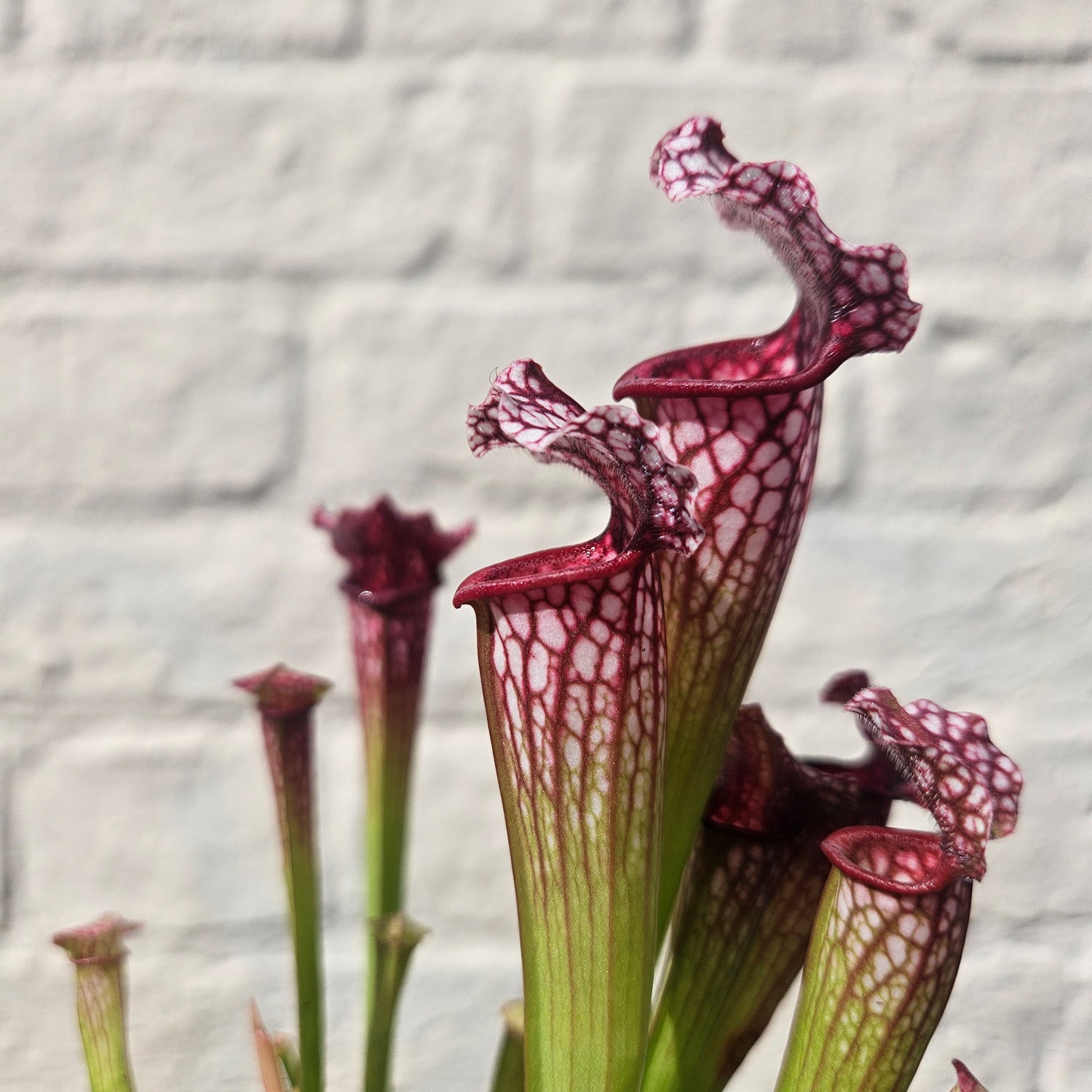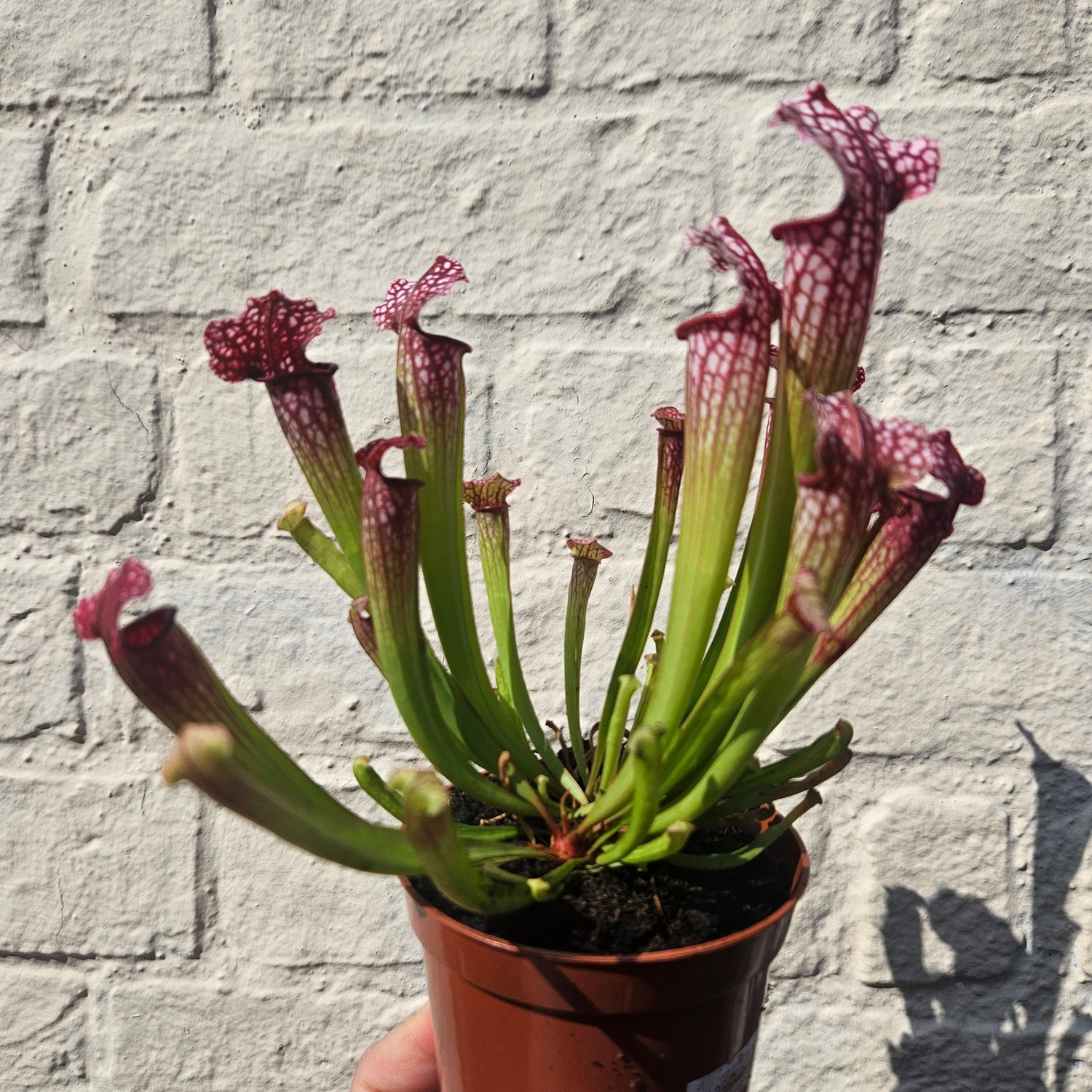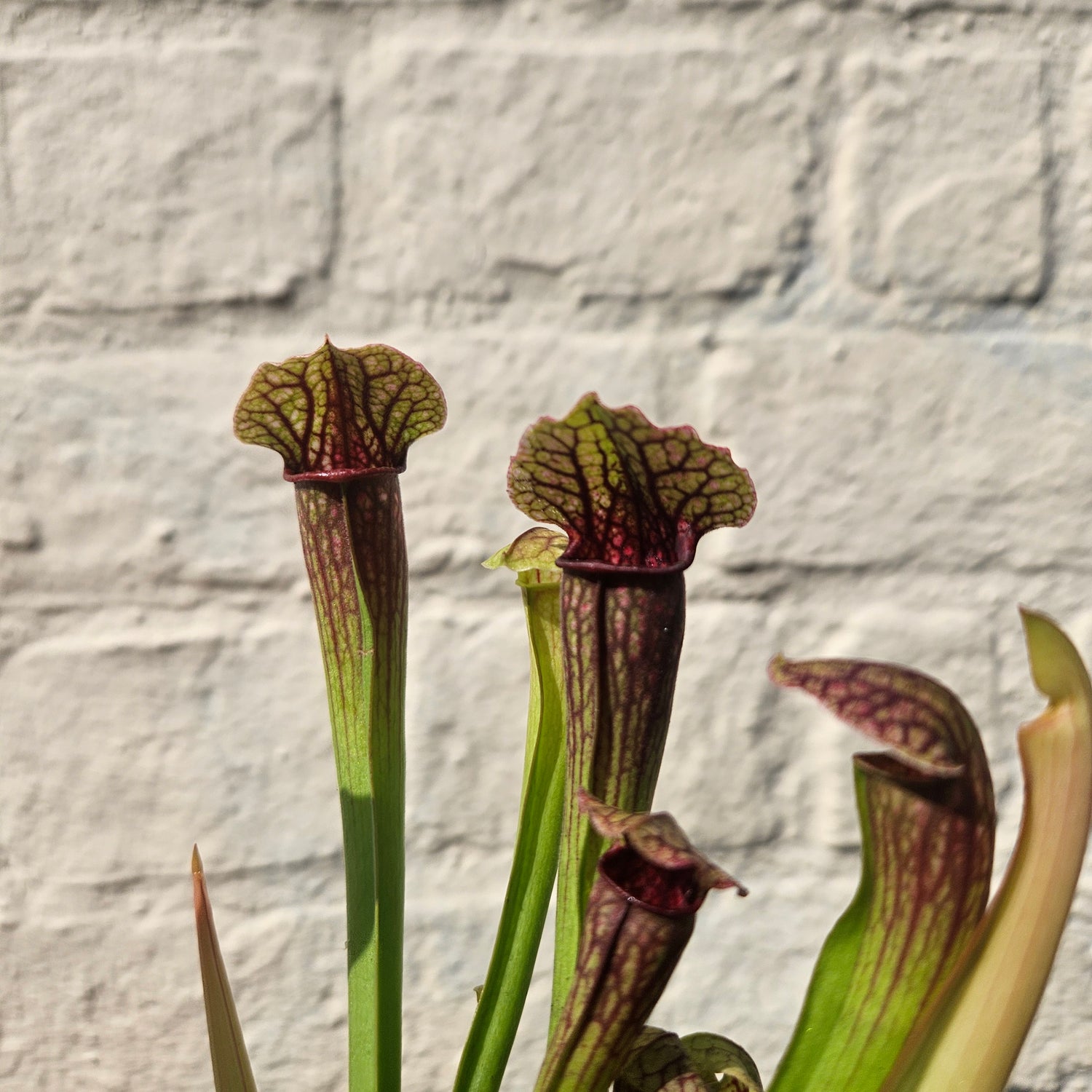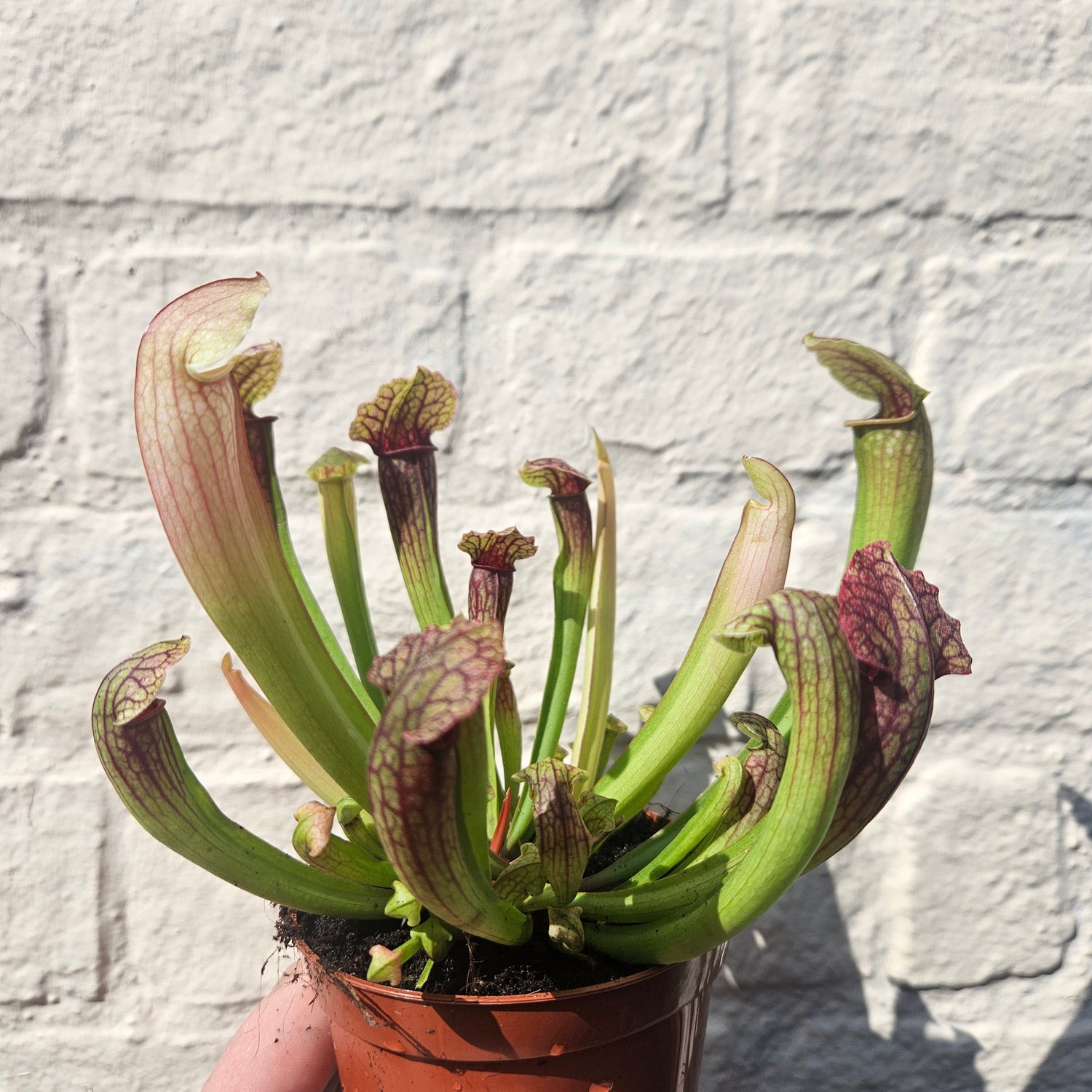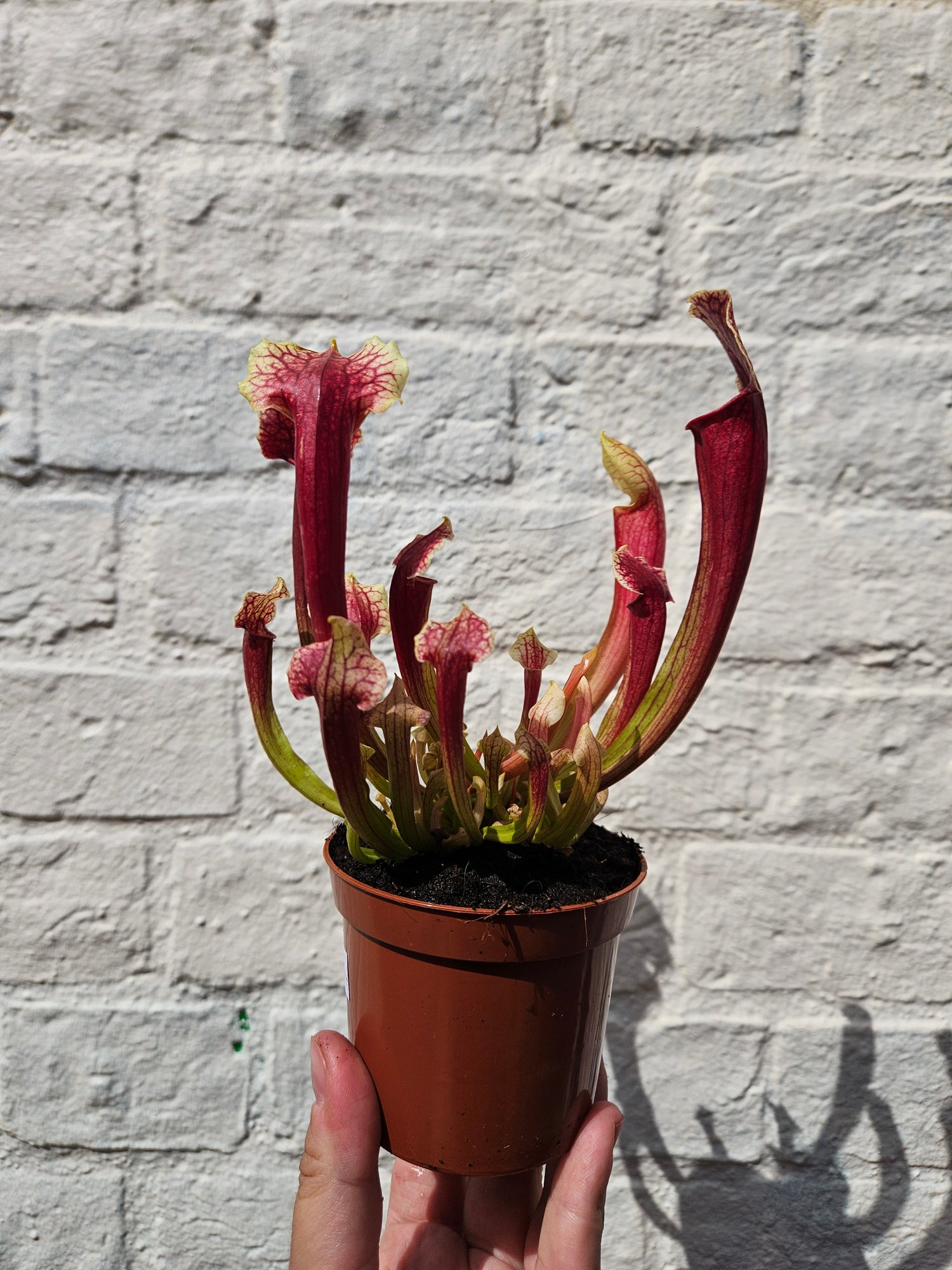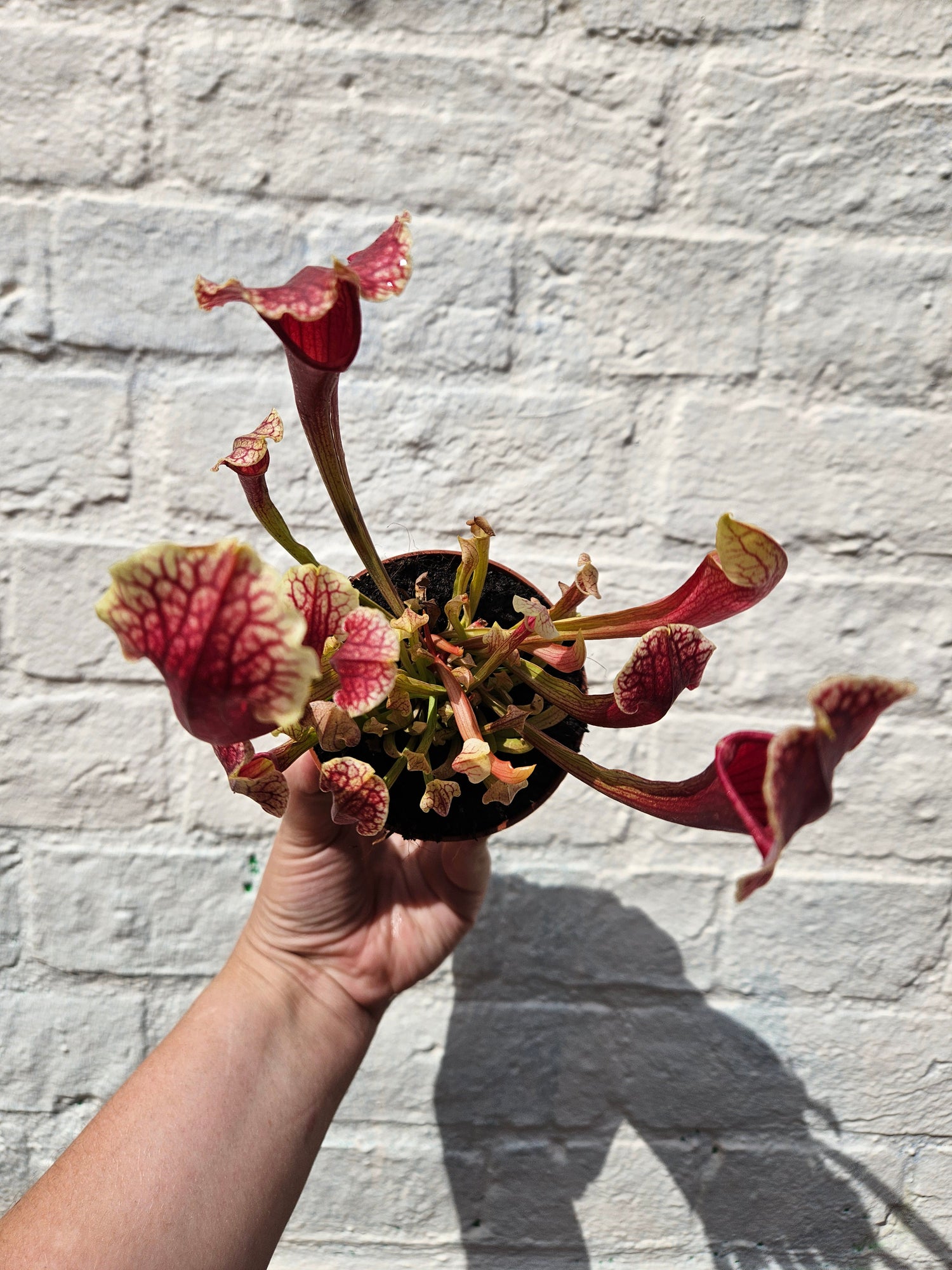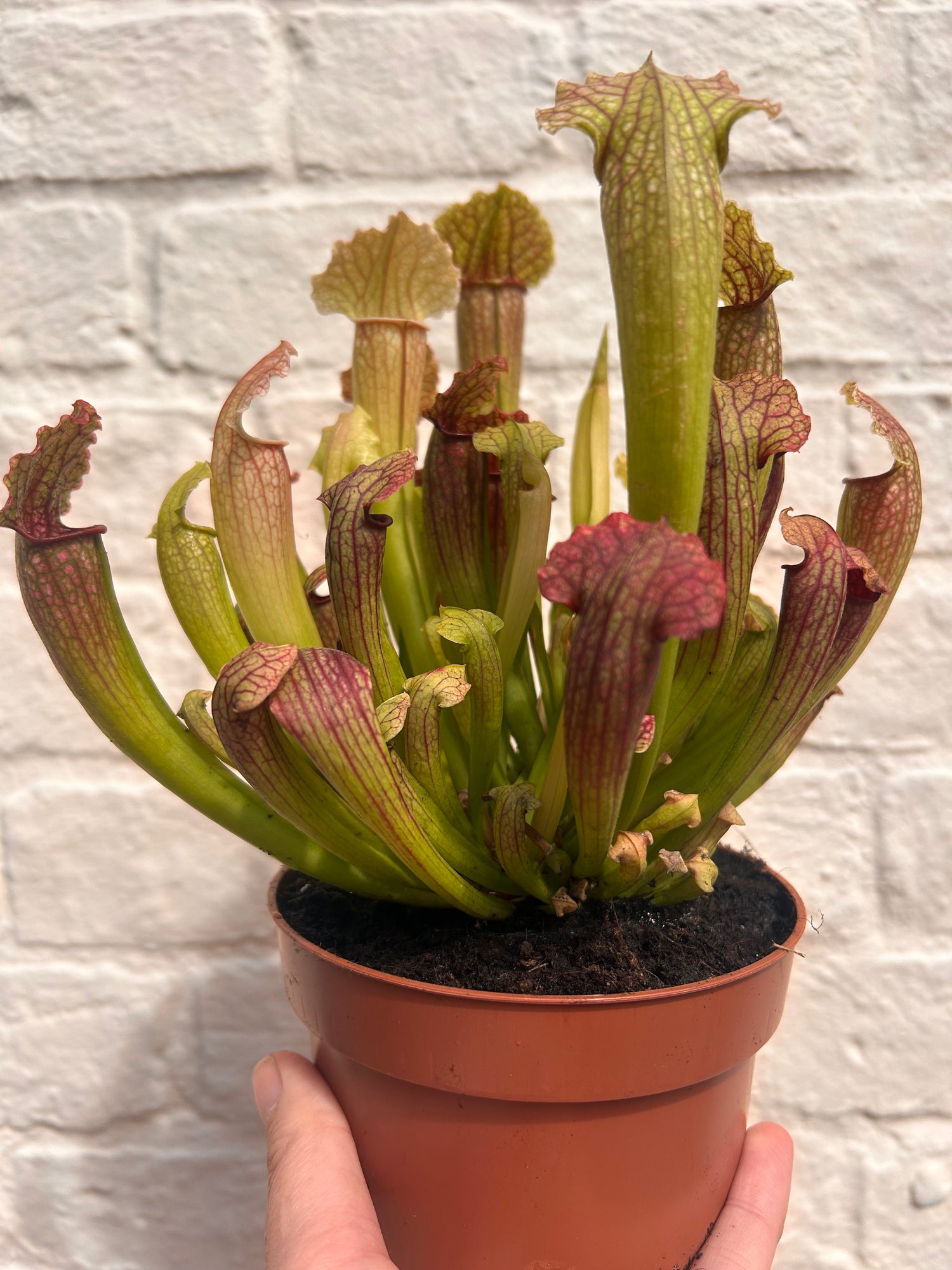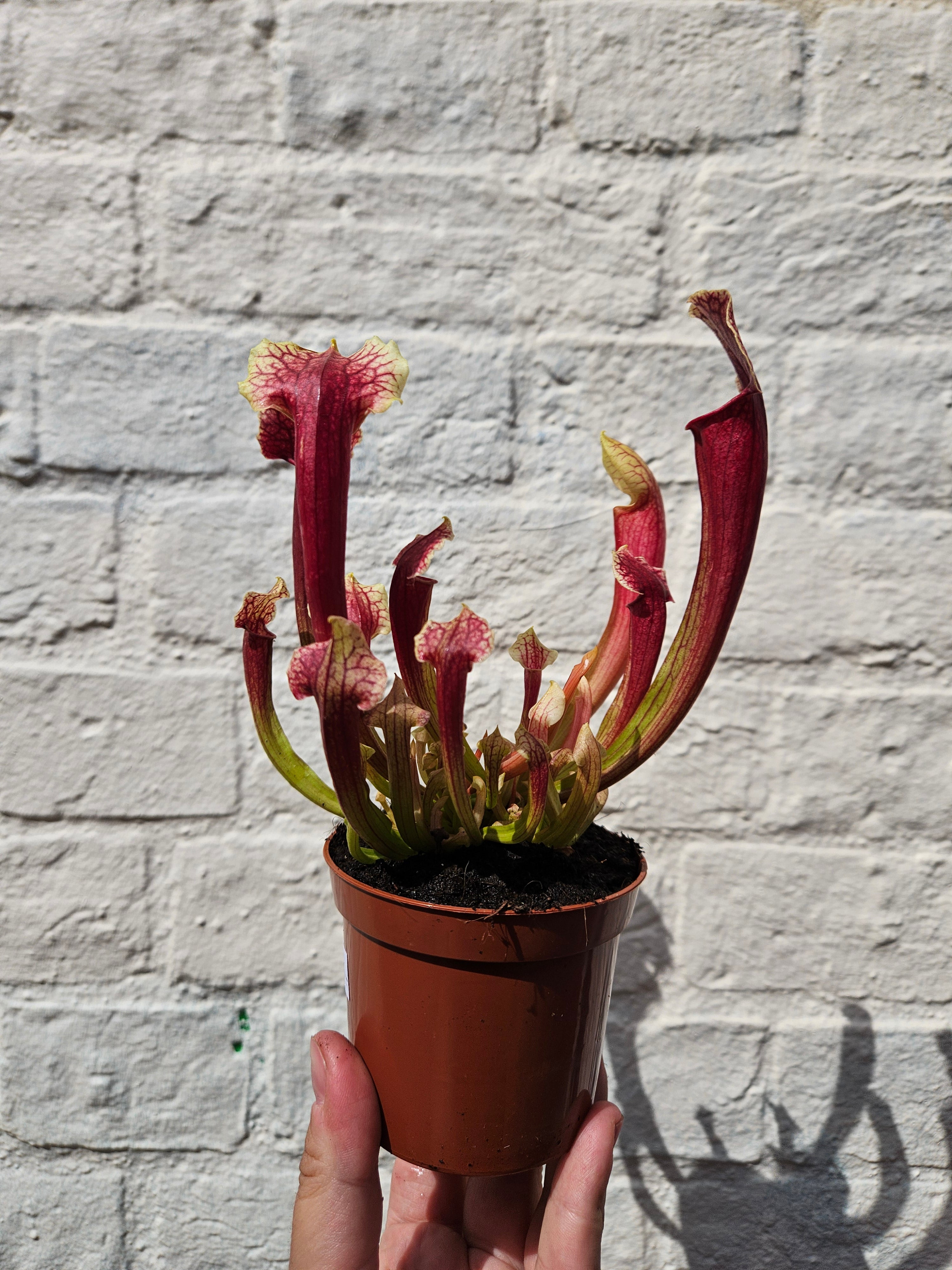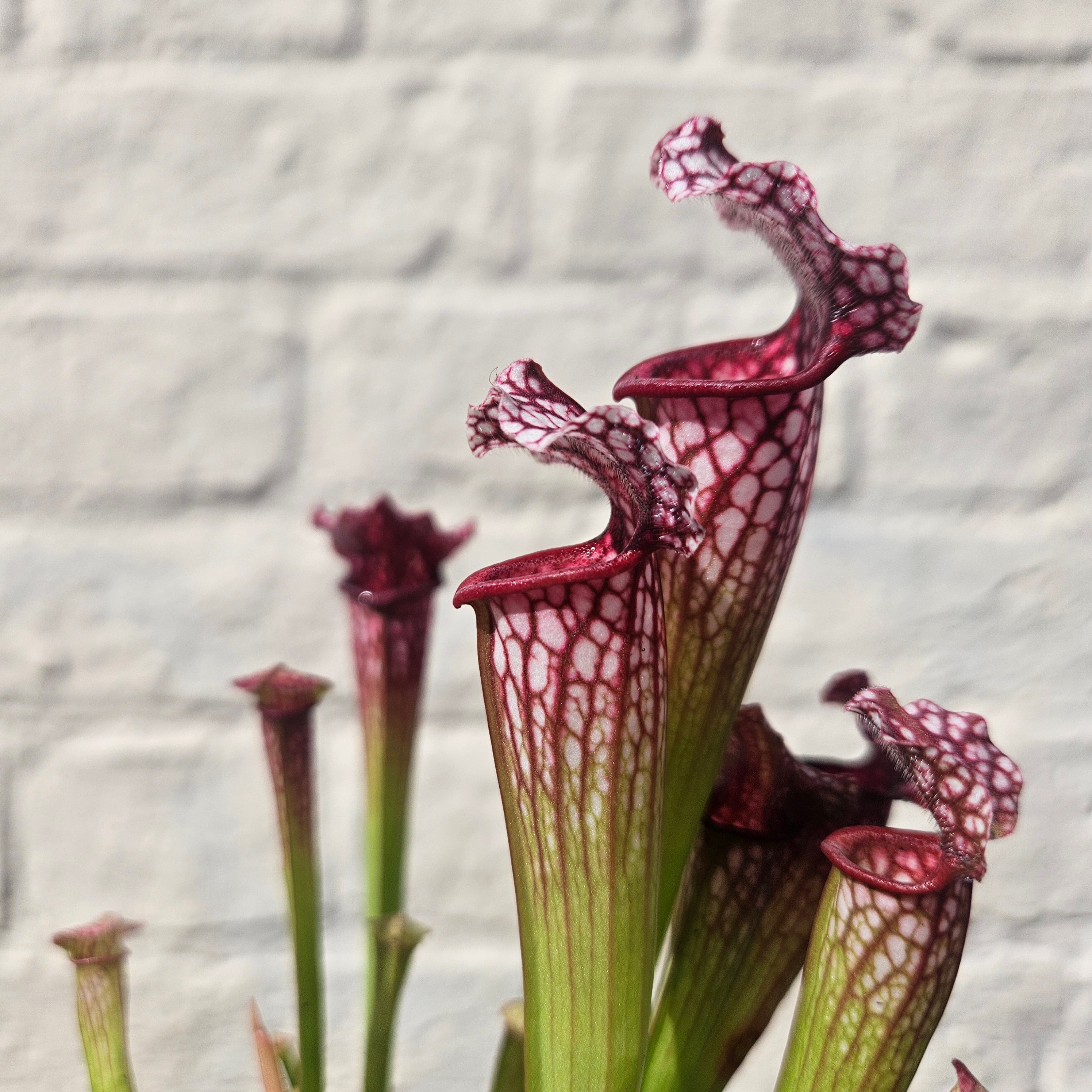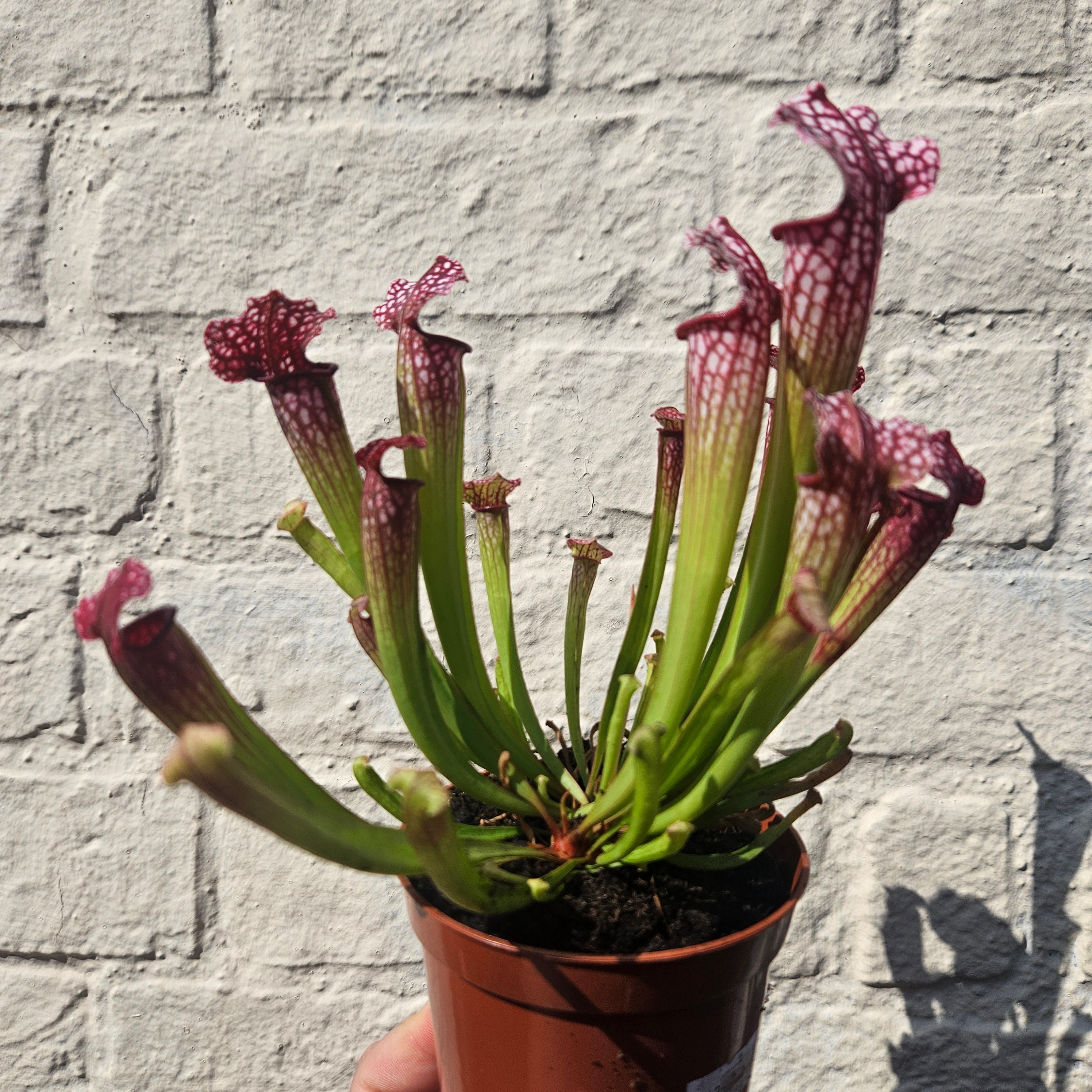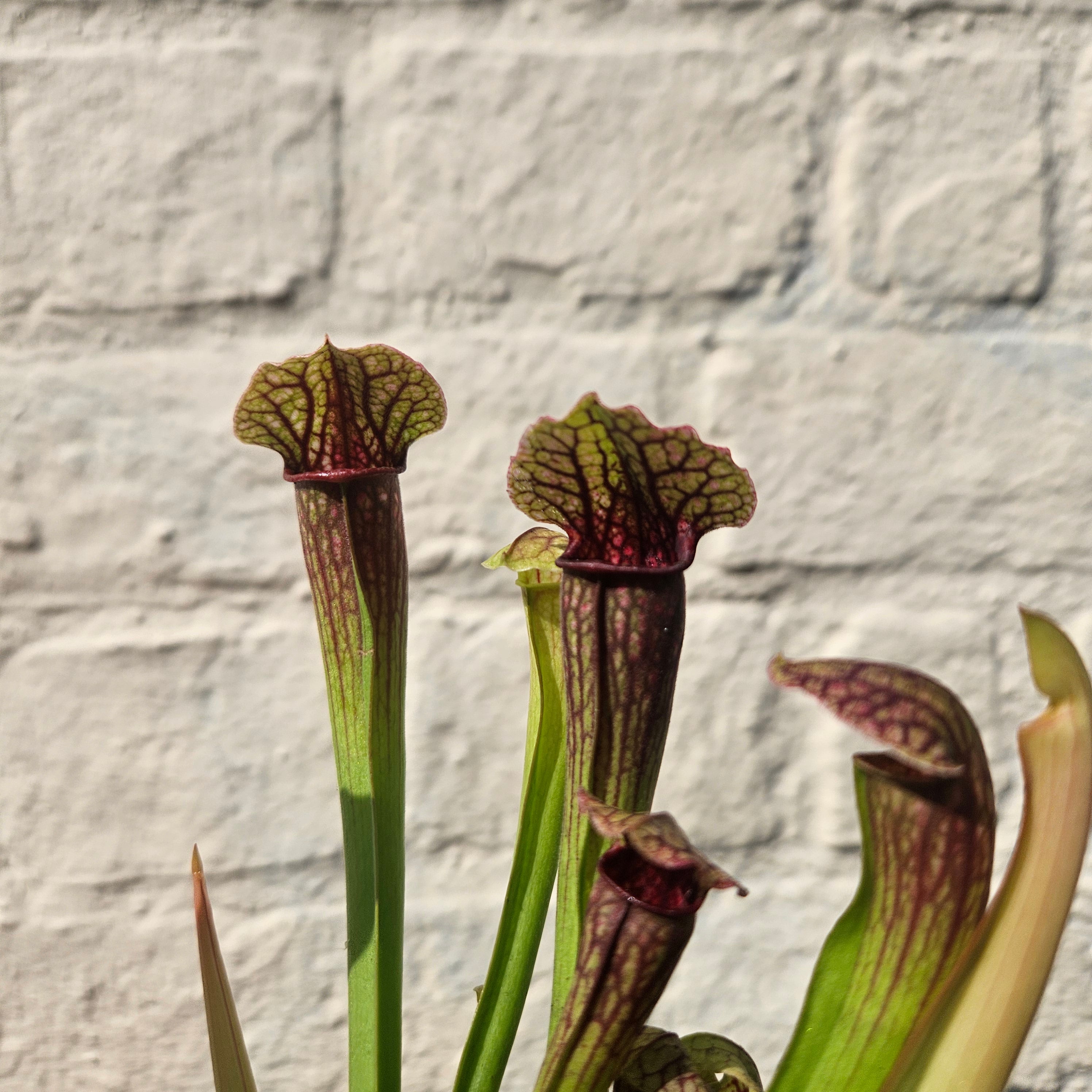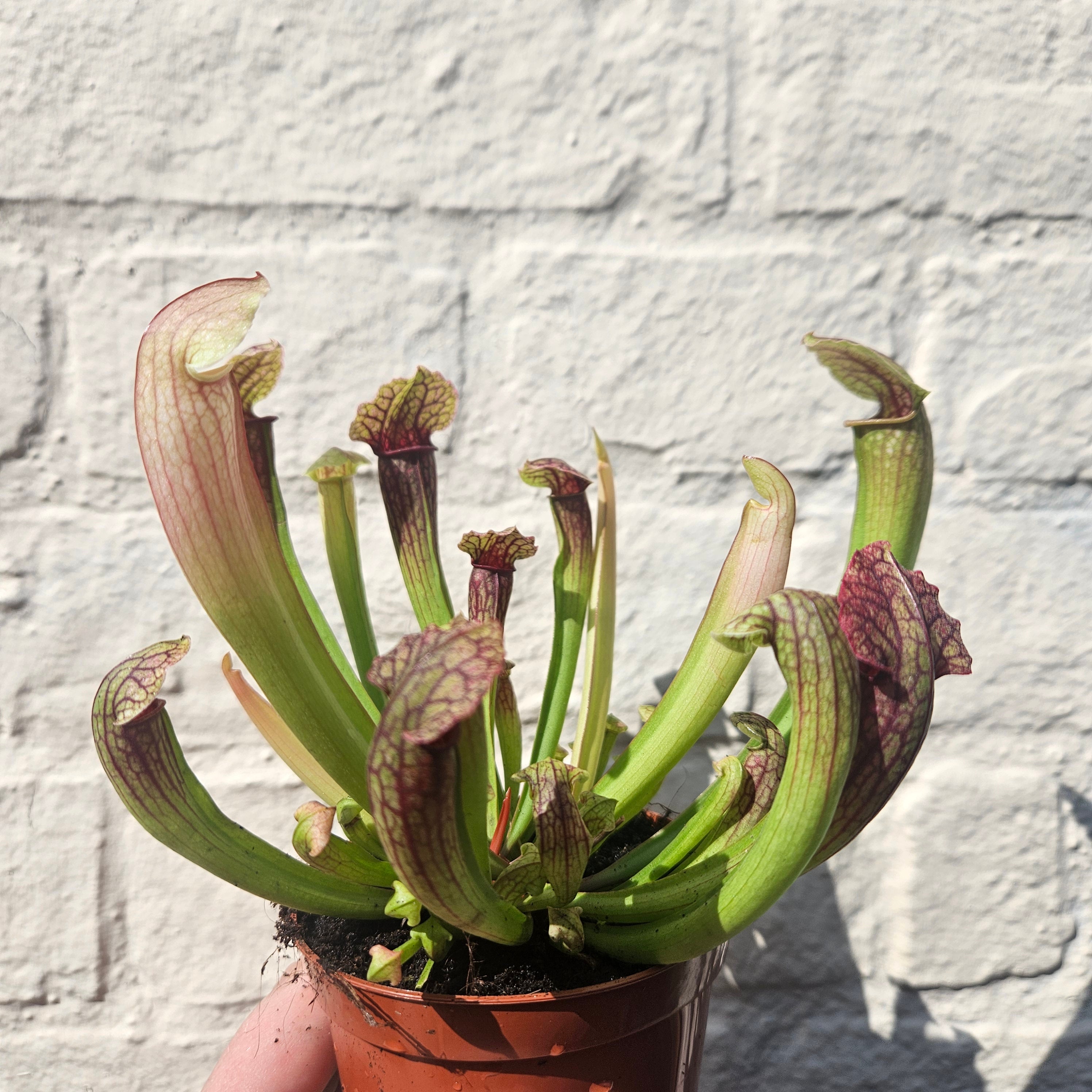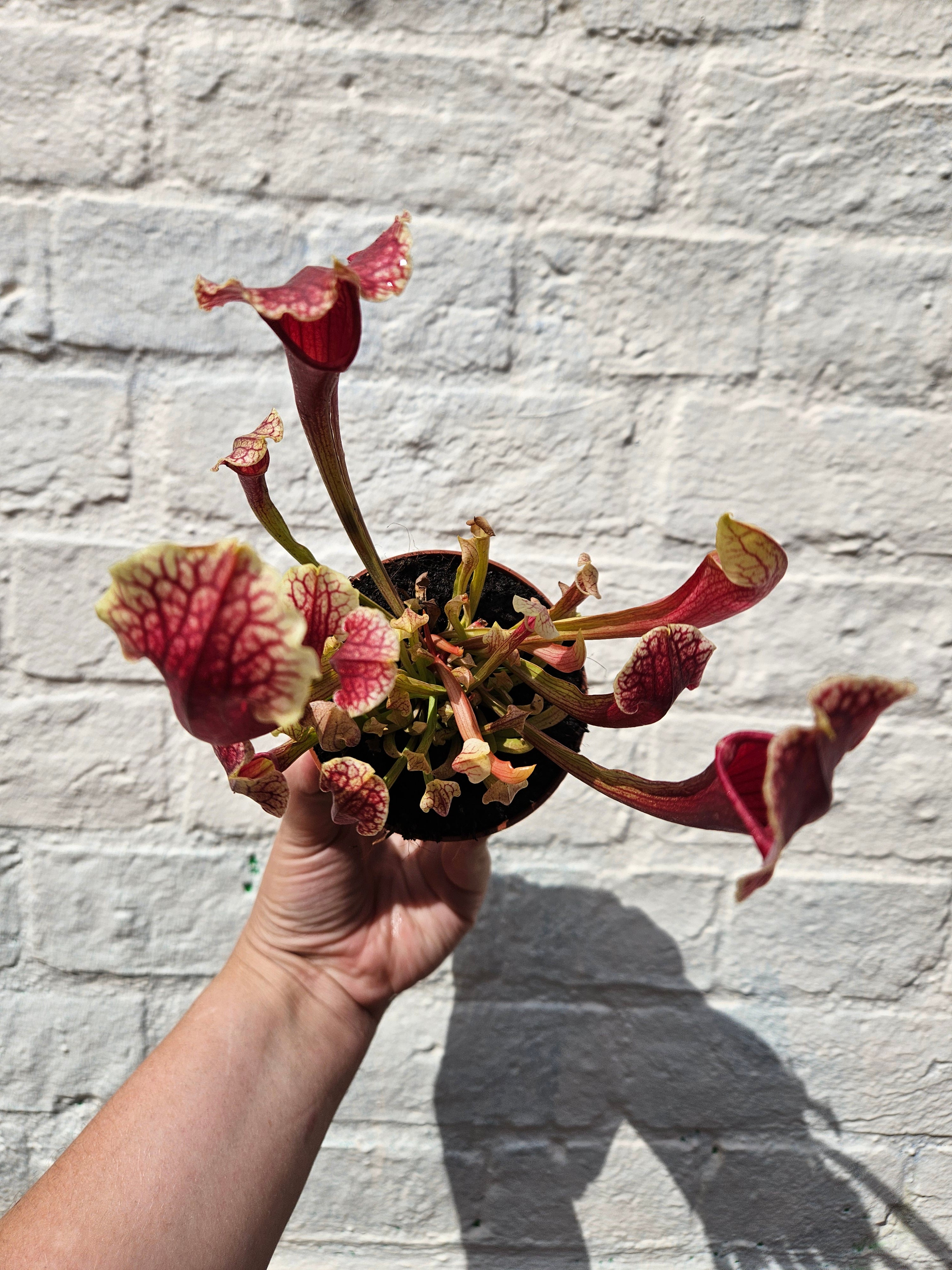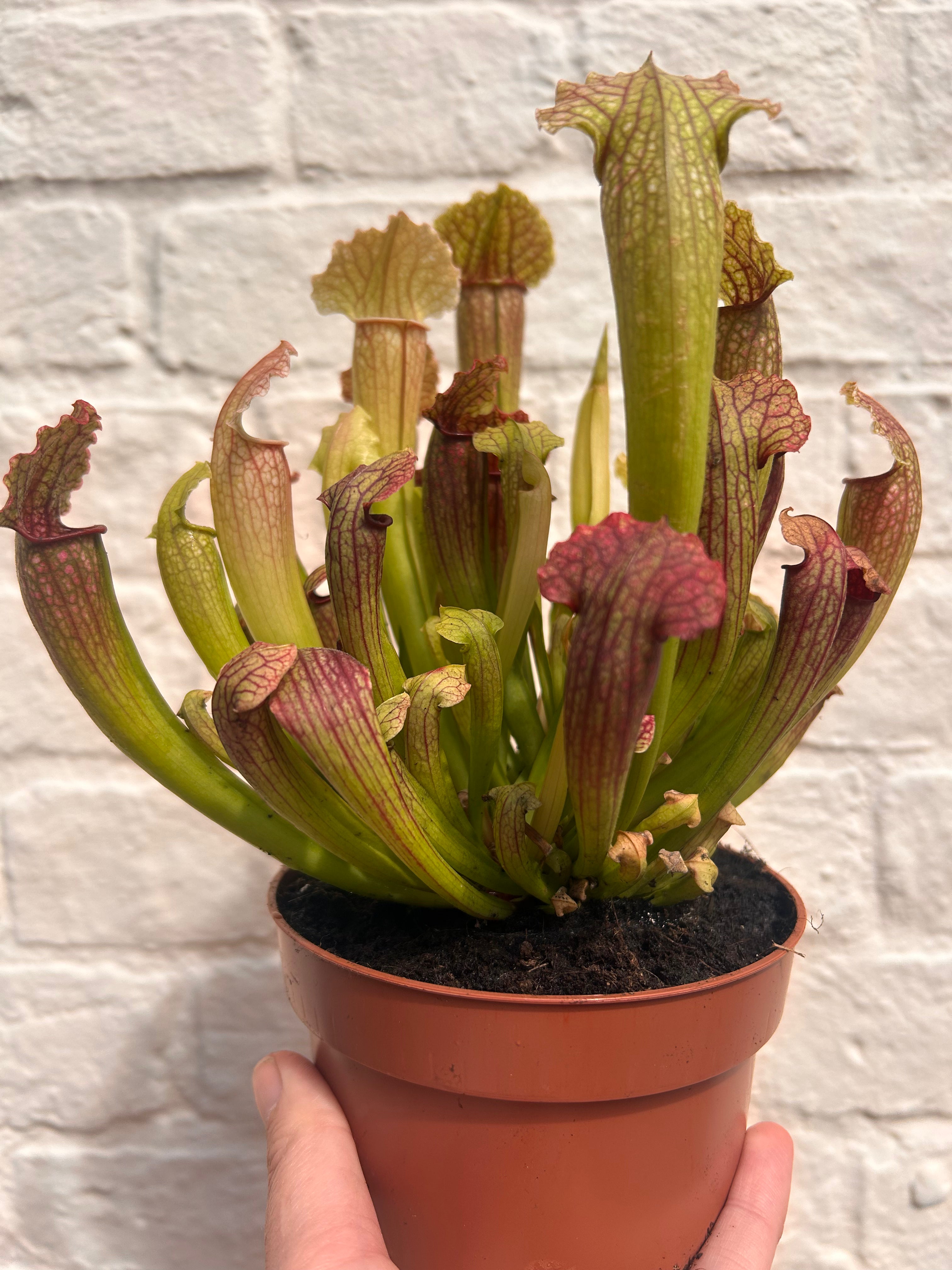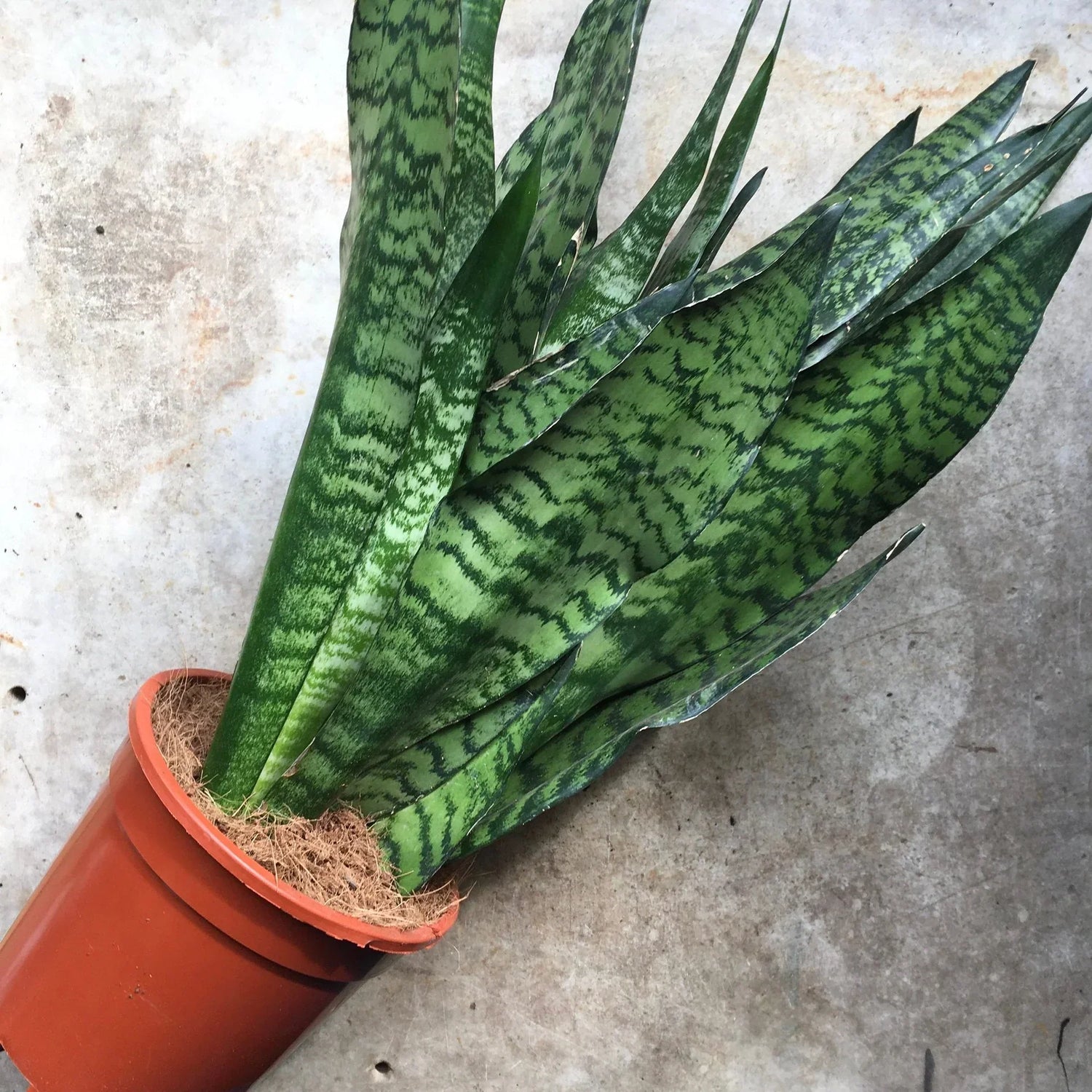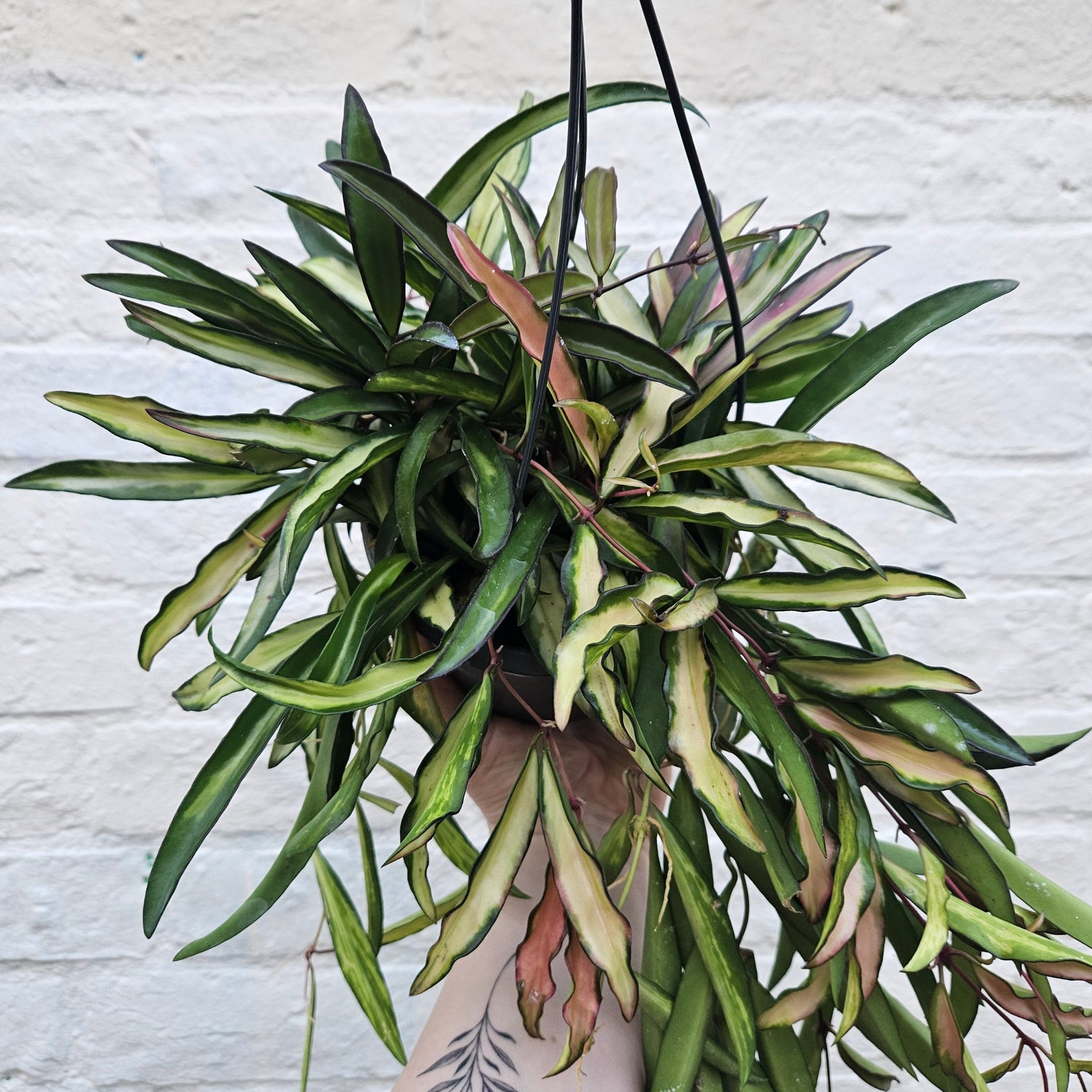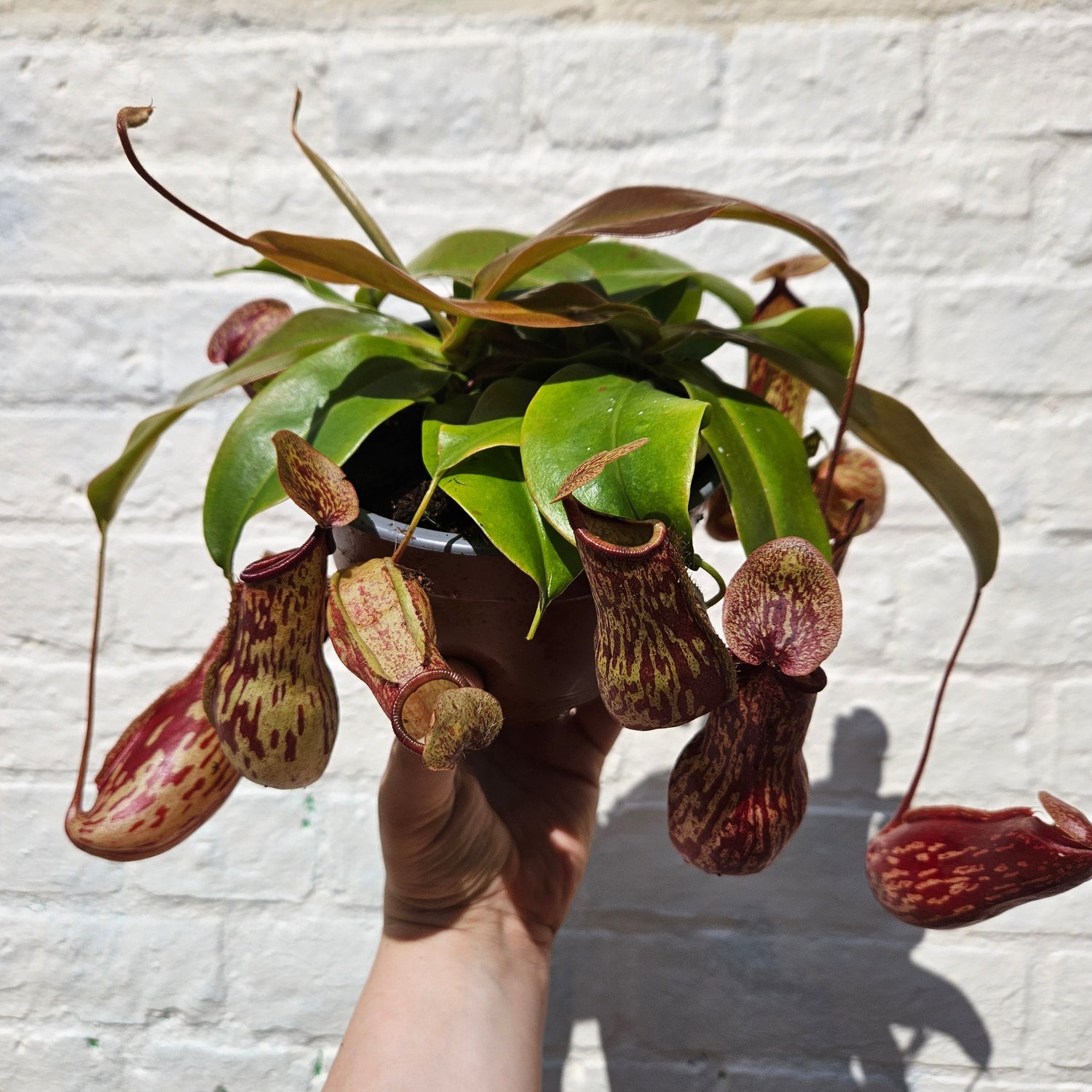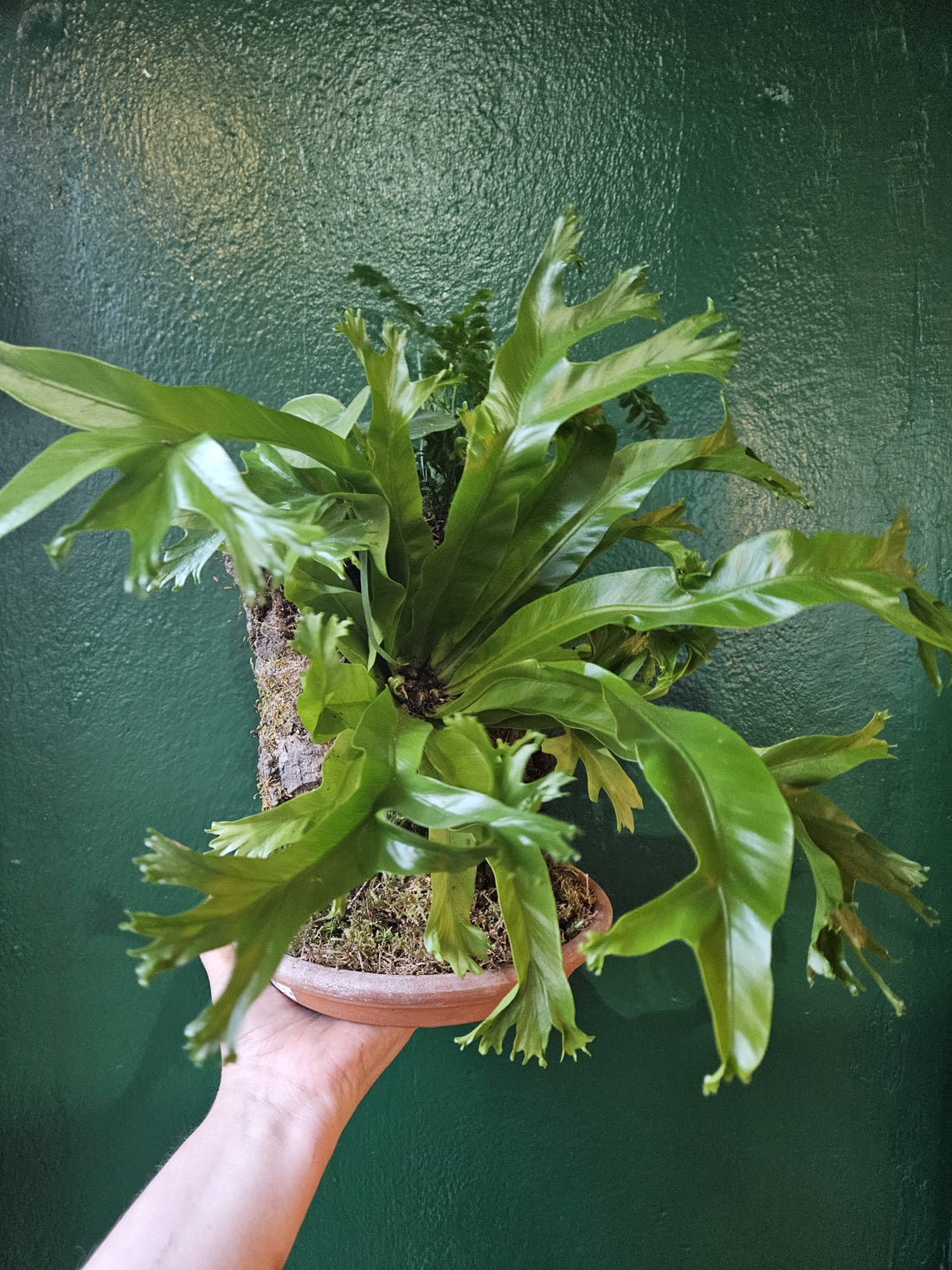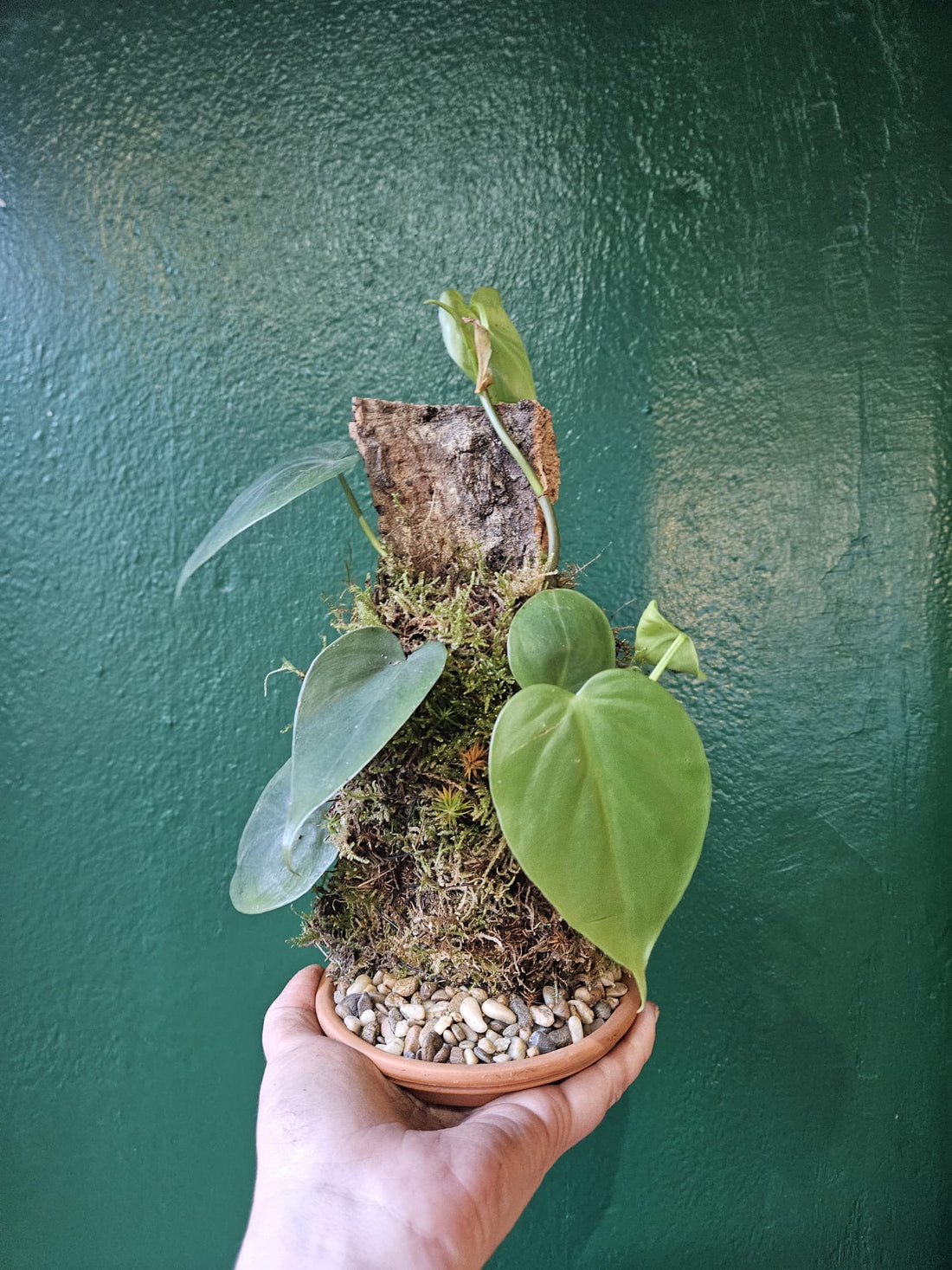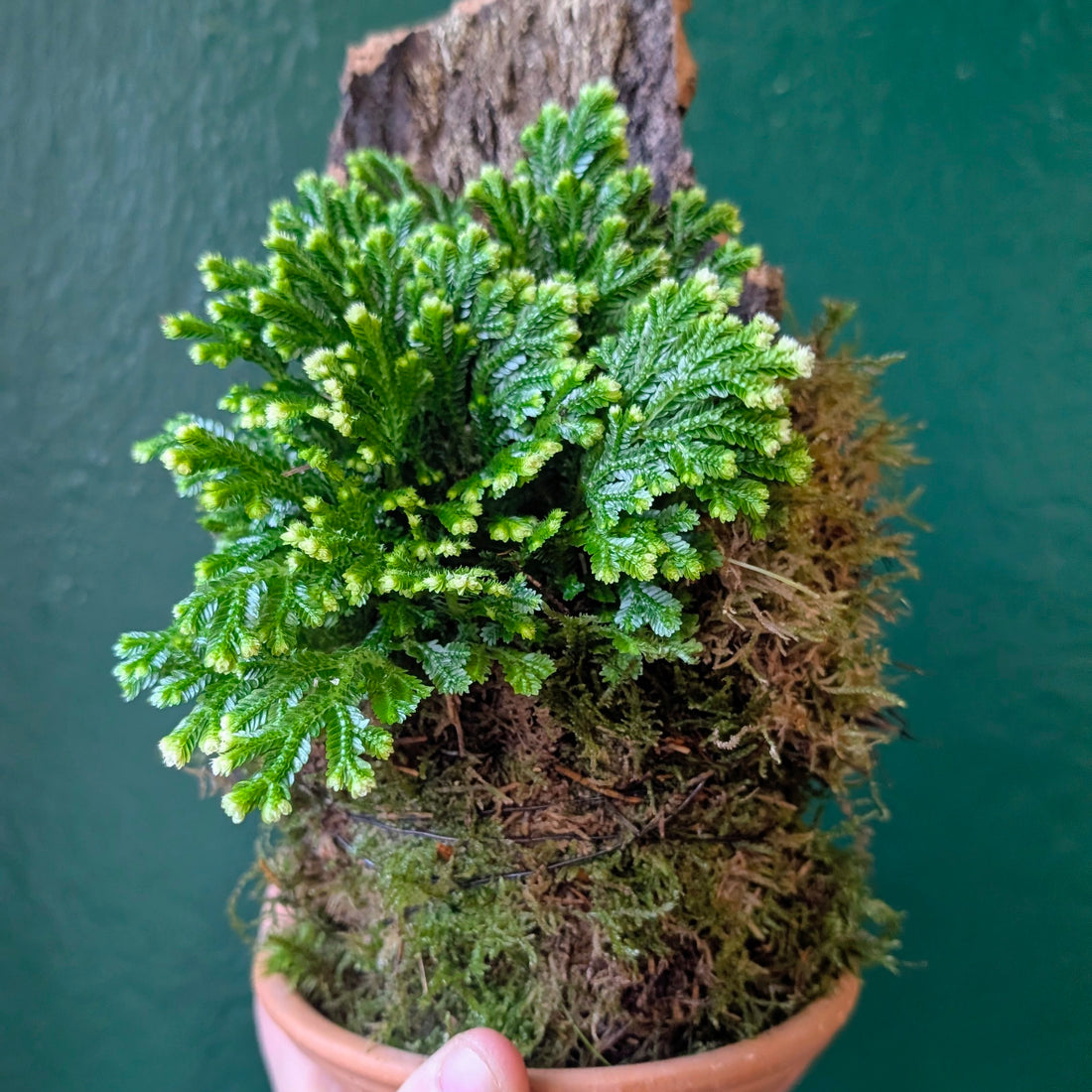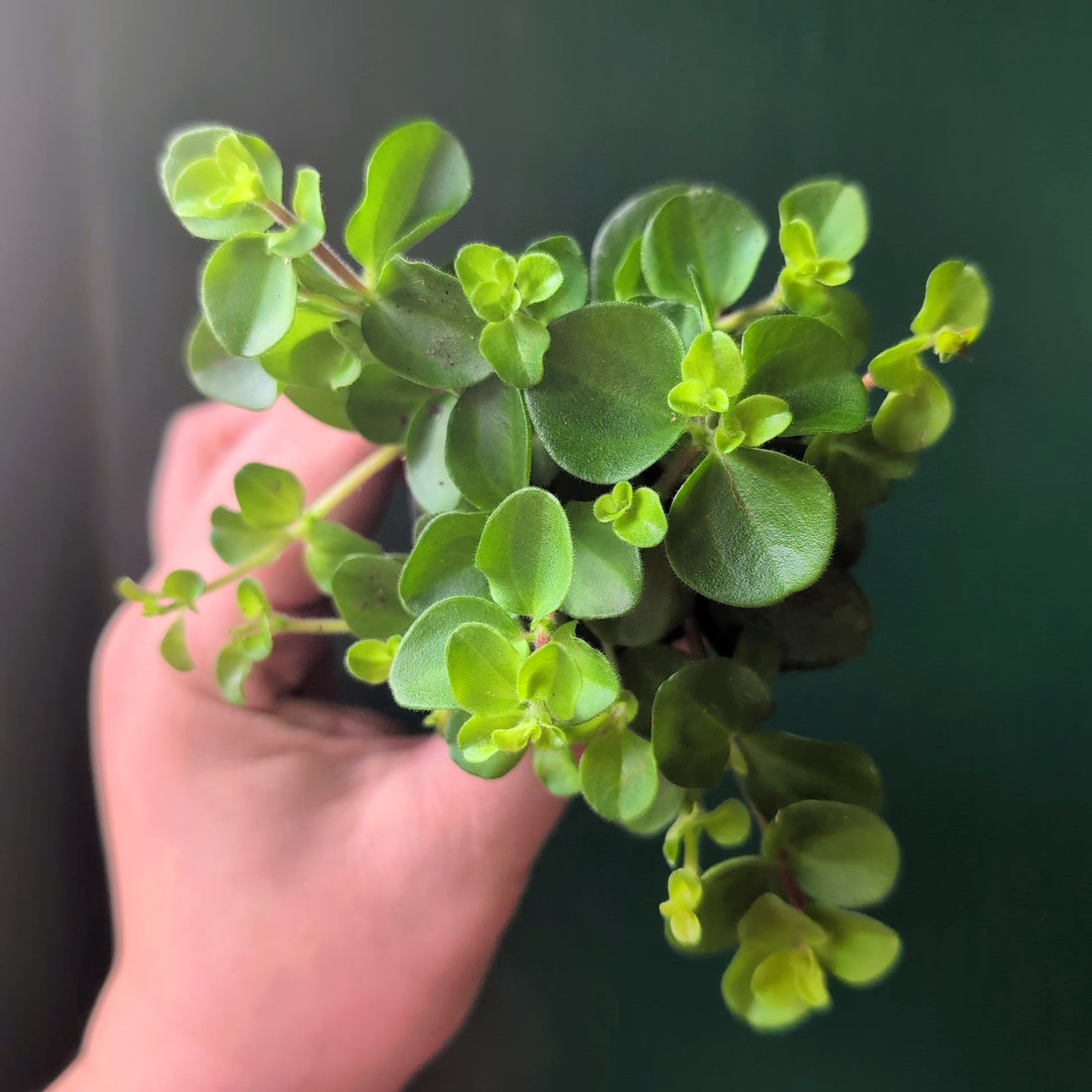Enter the Mesmerising Realm of Sarracenia: The Trumpet Pitcher Plant. Native to the southeastern coastal regions of North America, Sarracenia, commonly known as the Trumpet Pitcher Plant, is a fascinating genus of carnivorous plants that thrives in sunny coastal wetlands and marshy environments. These areas are rich in moisture but notoriously poor in nutrients—a challenge most plants can’t overcome. Sarracenia, however, has evolved a remarkable solution.
In recent years, much of their native habitat has been lost to housing development, placing some species at risk of extinction. Today, there are around 8 species and 20 subspecies, 17 naturally occurring hybrids and many more artificial created Sarracenia. These range from low-growing, rosette-forming types to towering varieties that can reach up to one meter tall. Sarracenias are herbaceous perennial that dies back in autumn.
Far more than botanical curiosities, Sarracenias are masterful insectivores. Their signature feature—the tall, narrow, trumpet-shaped pitcher—is often brightly colored to attract prey. Lured by a sweet-smelling nectar secreted around the mouth of the pitcher, unsuspecting insects are drawn closer. This nectar is not only enticing but mildly toxic and intoxicating. The interior of the pitcher is slippery and lined with downward-pointing hairs, making escape nearly impossible. Once an insect loses its footing, it falls into a pool of digestive fluids at the base of the pitcher, where it is slowly broken down and absorbed for nutrients. This simple yet deadly adaptation enables Sarracenia to survive—and even thrive—in environments where most plants would starve. In this comprehensive care guide, we’ll unlock the secrets to successfully growing and caring for these extraordinary plants. From sunlight requirements and watering methods to tips for winter dormancy, everything you need to know is right here.
Get ready to embark on a journey where gardening meets the wild and wonderful—welcome to the world of Sarracenias!
How to Look After a Sarracenia
Sarracenia (Trumpet Pitcher Plants) are captivating plants, but they do require specific conditions to truly thrive. Here’s how to keep your sundew healthy and happy:
-
Light – Sunshine Lover. Sarracenias love bright direct sunlight. A sunny windowsill is ideal. If you don’t have enough natural light, a plant grow light is a great alternative to ensure they receive enough energy to produce their bright colourful pictures. If you notice your pitcher plant is looking dull and floppy your plant is not getting enough light.
-
Watering – Moist but Not Drenched. Always use distilled water, rainwater, or reverse osmosis water—tap water contains minerals that can harm the plant. The soil should be consistently moist, but not waterlogged. Tray Method: Place the pot in a shallow dish of water and let the plant absorb moisture from the bottom. Keep the dish topped up as the water evaporates. This mimics the plant’s natural boggy environment and prevents overwatering from above. Avoid: Tap water and fertilizers, which can build up salts and damage the roots.
-
Feeding – Let Nature Do the Work. Most Sarracenias are excellent hunters and will catch their own prey especially if they are grown outside. However, if grown inside and they aren’t attracting insects, you can supplement their diet during the growing season (spring to early autumn) You can feed 1 pitcher every 2–3 weeks with small insects (e.g., fruit flies, gnats). If live insects aren’t available, you can use dried insects like crickets, mealworms and bloody worms and feed them by dropping the food into the pitchers. Be wary to not overfeed – allow the plant time to fully digest its prey.
-
Humidity & Temperature – Moderate Conditions. Sarracenias prefer warm humid conditions between 50–60%. You can try a humidifier to help increase humidity .Ideal Temperature Range: 21°C – 29°C (70°F – 85°F). Dormancy: They require a cold winter dormancy like in their natural habitat from November to February. You can place them near a window in a garage or shed or keep them in an unheated greenhouse.
How to Care for a Sarracenia in Winter
Sarracenia naturally enters a period of dormancy during the colder months, typically from November to February. They can tolerate light frost if kept in a sheltered environment such as an unheated conservatory, greenhouse, or near a window in a shed or garage. During dormancy, you’ll notice the plant starting to die back—this is completely normal, and the dead parts can be safely trimmed away.
Some Sarracenia species also produce non-carnivorous leaves during winter called phyllodia. It’s important to reduce watering during this time, keeping the soil just damp rather than wet, as excessive moisture combined with low temperatures can cause root rot. With proper care throughout the winter dormancy, your Sarracenia will be ready to burst back to life when the growing season returns.
When and How to Repot a Sarracenia
Sarracenias can be repotted every two to three years to refresh the soil and support healthy growth. Repotting is also necessary if you notice signs of overcrowding, or roots pushing out from the drainage holes. When repotting, it's important to use the right soil mix, as these plants are highly sensitive to nutrients and cannot tolerate standard potting soil. The ideal medium is a nutrient-poor, well-draining mix. A combination of peat and sand works well, or you can use a ready-made carnivorous plant soil mix. Another excellent option is a 1:1 ratio of sphagnum moss and perlite, which provides good moisture retention. Repotting is best done during the growing season, typically in spring, when the plant is most active and can recover quickly from the disturbance. Be gentle when handling the roots, and water thoroughly after repotting to help the plant settle into its new environment.
How Often Should You Water a Sarracenia
Keep the soil consistently moist but not waterlogged. Water your Sarracenia when the soil begins to dry out. Using the tray method—placing the pot in a shallow dish of water—helps maintain proper hydration by allowing the plant to absorb moisture as needed, preventing overwatering.
Best Soil for a Sarracenia
For best results, use a peat and sand mix or a specialised carnivorous plant soil mix. Another excellent option is a 1:1 ratio of sphagnum moss and perlite, which provides excellent moisture retention while maintaining good drainage. Avoid regular potting soil, as it contains minerals and fertilisers that can be harmful to Sarracenia.
How to Propagate a Sarracenia
By Division: Mature Sarracenia plants develop multiple growth points along their rhizomes, which are root-like structures. You can carefully separate these divisions from the parent plant and pot them up individually in a suitable carnivorous plant soil mix. After repotting, care for the new plants as you would a mature Sarracenia.
Sarracenia Information and Facts
Native Habitat:
This plant is native to the coastal wetlands and marshy areas of South Eastern North America. It thrives in moist, in soils where other plants may struggle to survive.
Habit:
These herbaceous perennials are clump-forming and grow in rosettes, with sizes varying widely by species—ranging from just 6 inches to over 1 meter tall. Sarracenia species display an impressive spectrum of colors, including reds, yellows, greens, purples, and whites. While most species produce upright pitchers, some have pitchers that lie horizontally across the ground.
The plants spread through underground rhizomes, and a single clump can eventually expand to several feet in diameter. At the top of each pitcher is a partially covering lid, or operculum. This structure serves a dual purpose: it prevents rainwater from diluting the digestive fluids inside the trap, and it also helps camouflage the opening, disorienting insects and making it even harder for them to escape once inside.
How Do Sarracenias Work
The pitchers of Sarracenia are actually modified leaves, uniquely adapted to lure and trap a wide variety of unsuspecting insects. These traps use a combination of visual and chemical cues to entice their prey. Brightly colored and often strikingly patterned, the pitchers produce a sweet, intoxicating nectar around the rim, drawing insects toward the opening.
Once an insect lands, it often loses its footing on the slick inner surface, which is coated with waxy secretions and lined with downward-pointing hairs that prevent escape. The prey eventually falls into a pool of digestive enzymes at the base of the pitcher, where it is broken down. The plant then absorbs the nutrients—mainly nitrogen and phosphorus—which are scarce in the nutrient-poor soils where Sarracenia naturally grows.
What Does a Sarracenias Eat
Insectivorous Diet: Primarily consumes insects like flies, spiders, ants, and beetles. Avoid feeding it non-insect food.
Do Sarracenias Flower
Yes, Sarracenia do flower—often in early to mid-spring before the pitchers fully develop. Their flowers are large, nodding, and typically hang upside down, each with five prominent petals. Blooming for around a month, the flowers vary in color depending on the species, ranging from vibrant yellow and white to deep red and maroon. Uniquely, the flower structure is designed to avoid self-pollination, encouraging cross-pollination by insects like bees, which are guided through a one-way system within the bloom.
How Big Can a Sarracenia Get
Size Varies: Typically, Sarracenia pitchers reach around 30cm in height, though some species produce traps that are larger or smaller. The tallest species, Sarracenia flava, can grow pitchers up to about 1 meter tall, making it one of the most impressive members of the genus.
